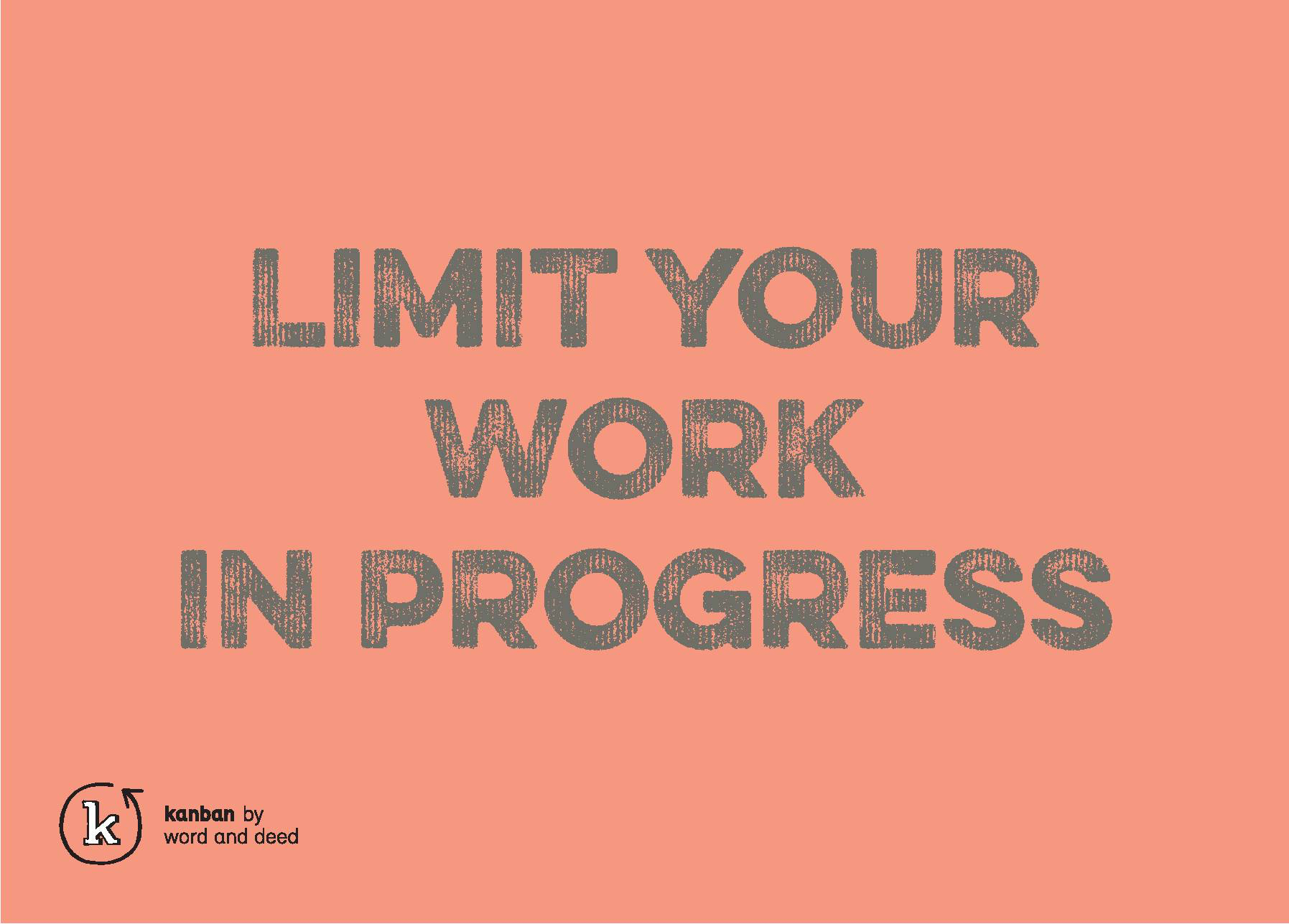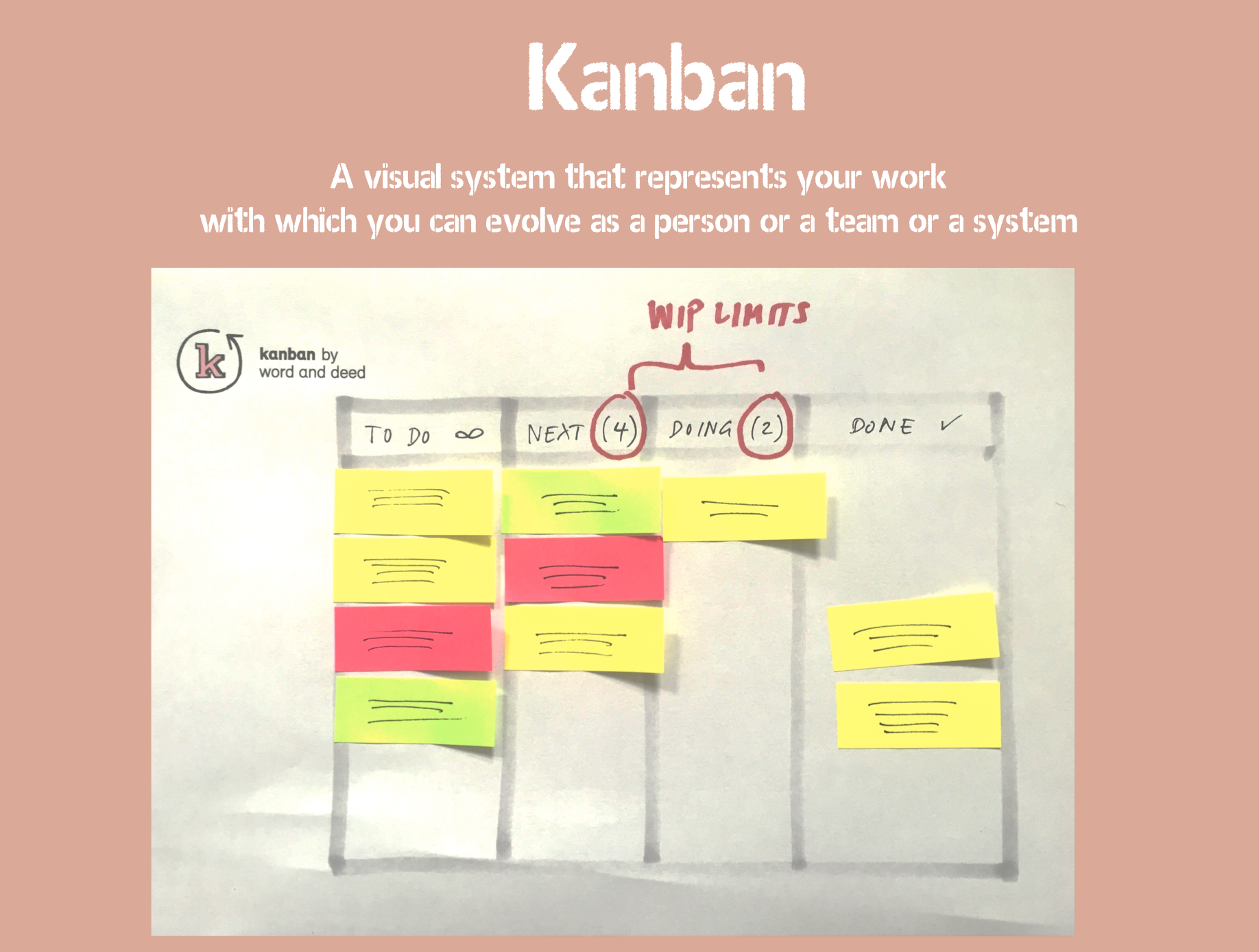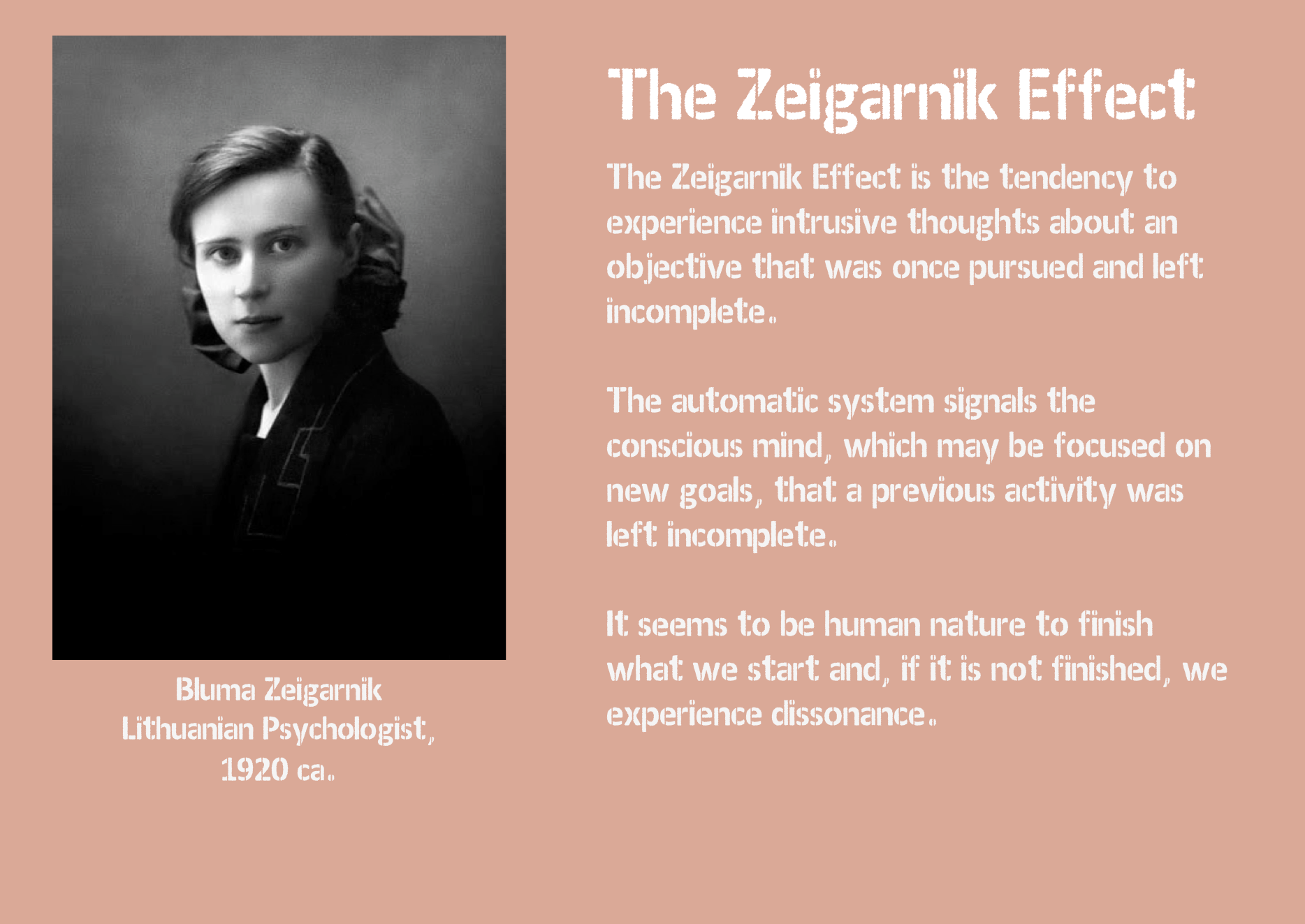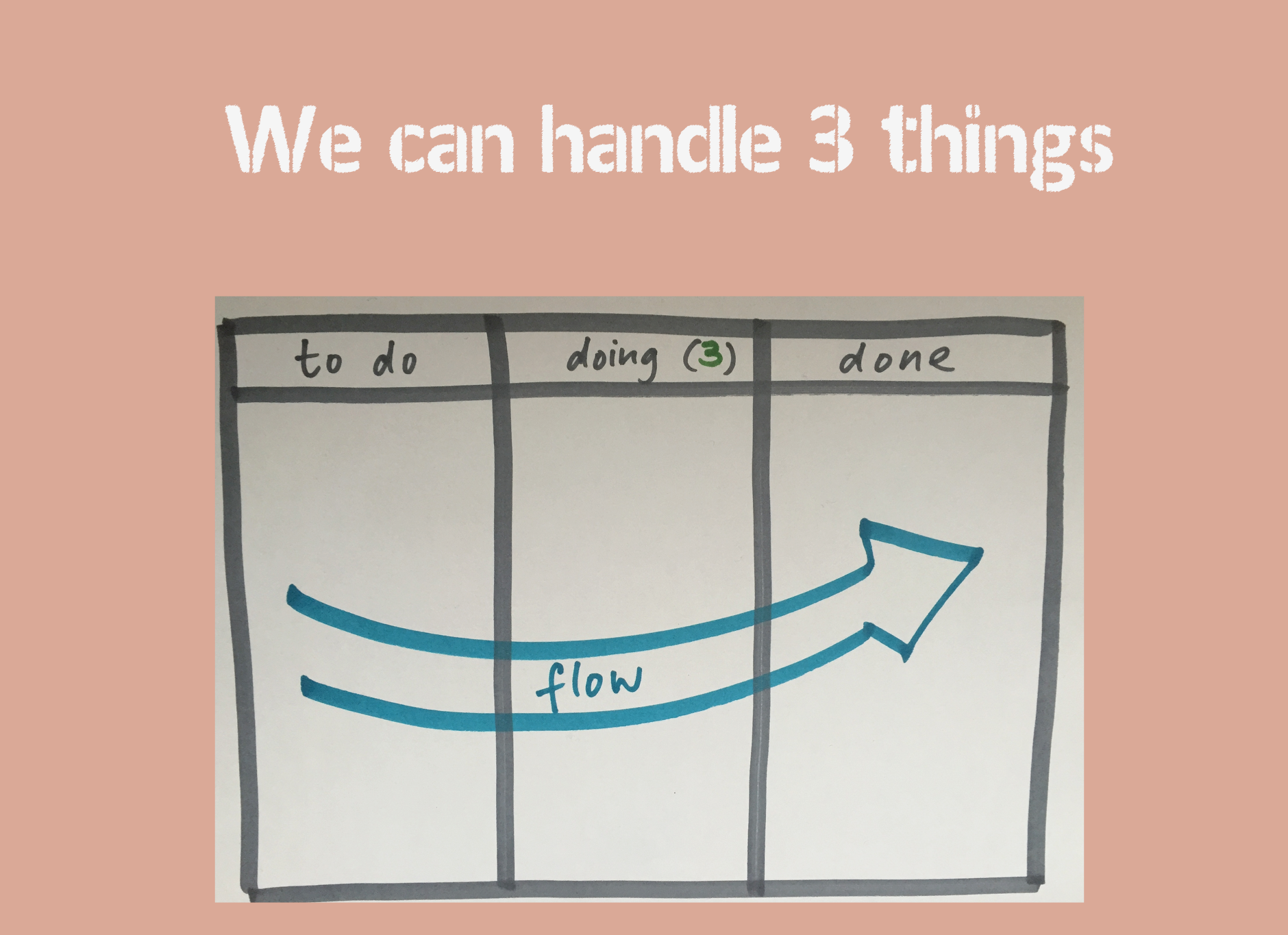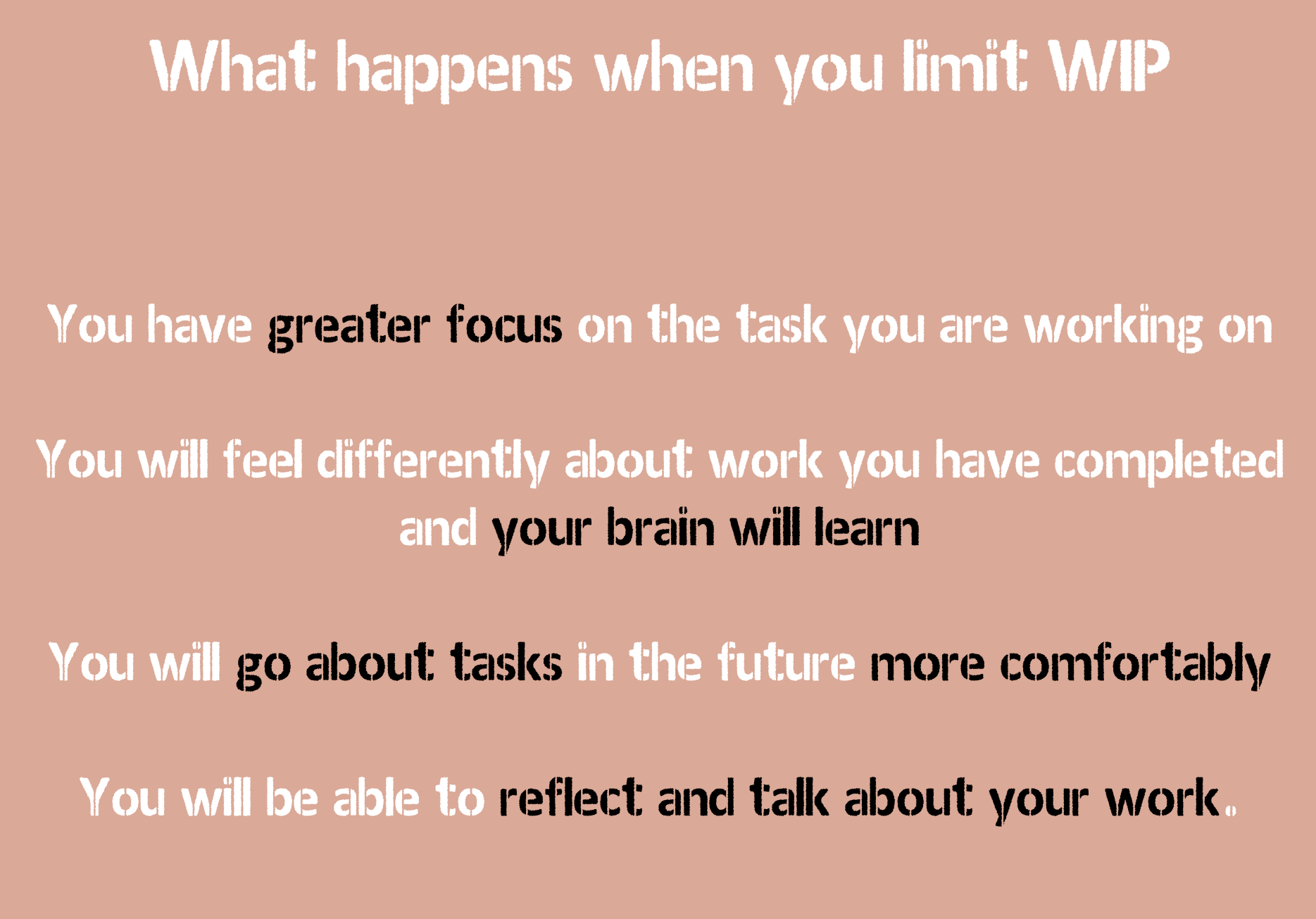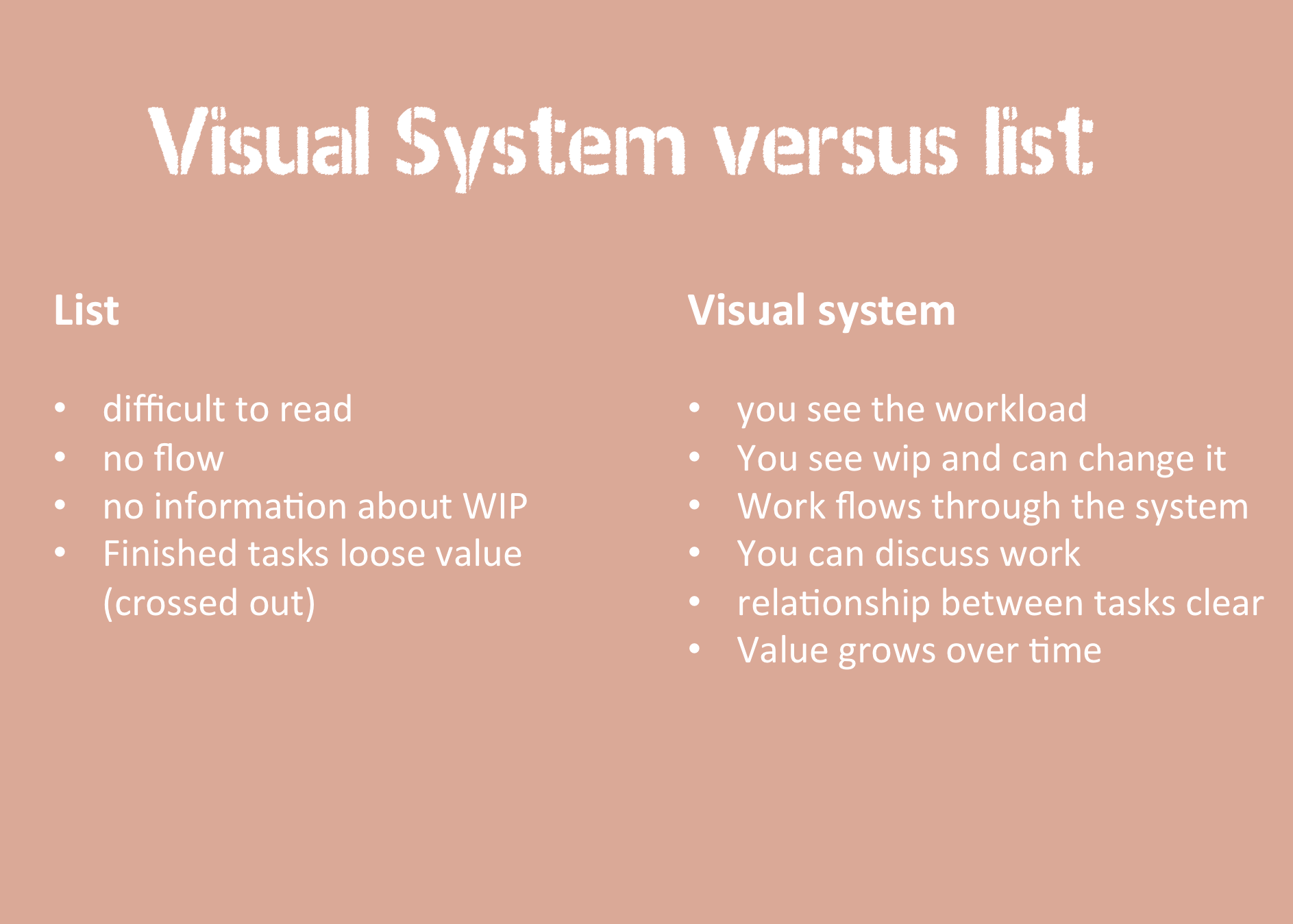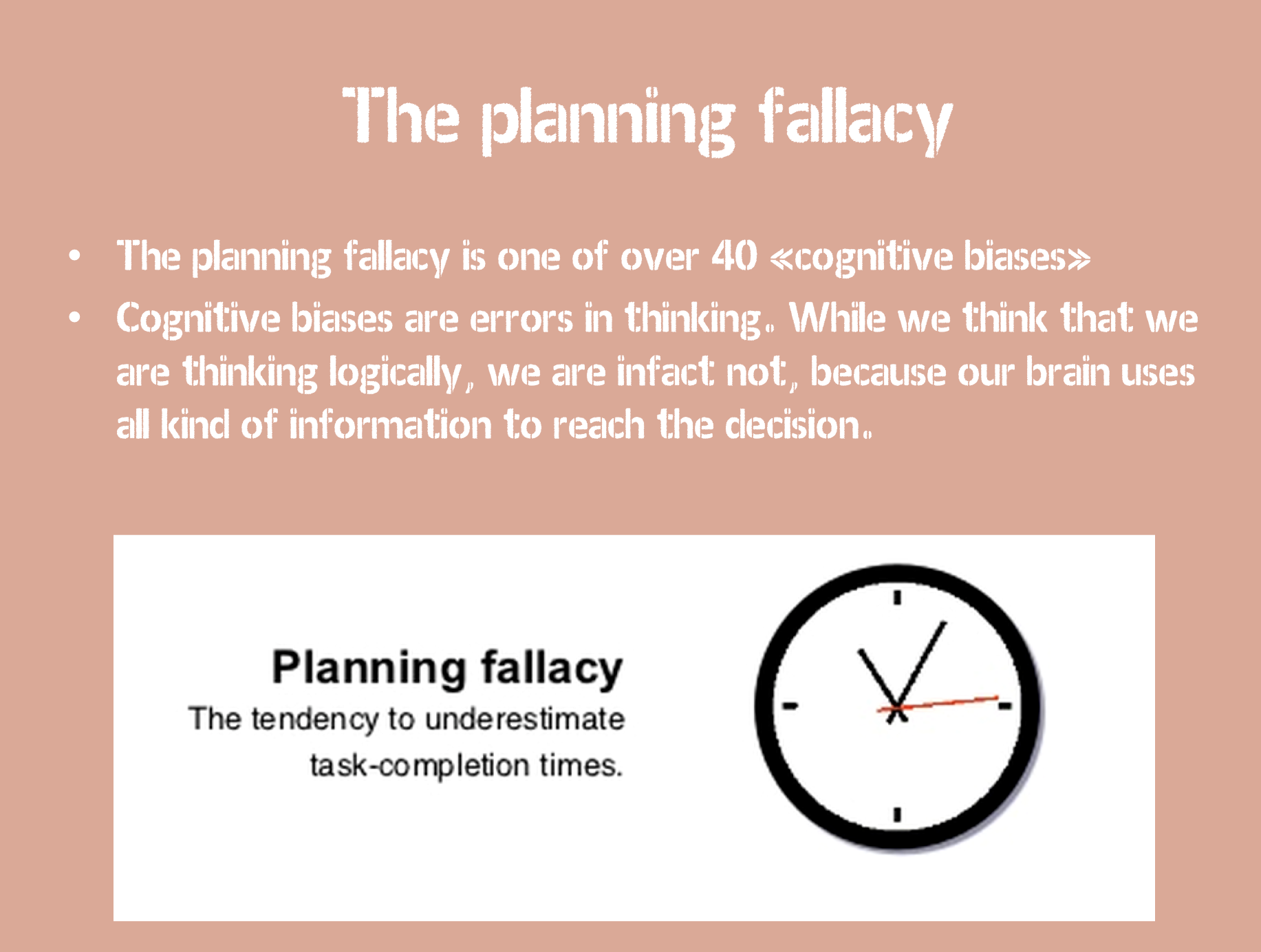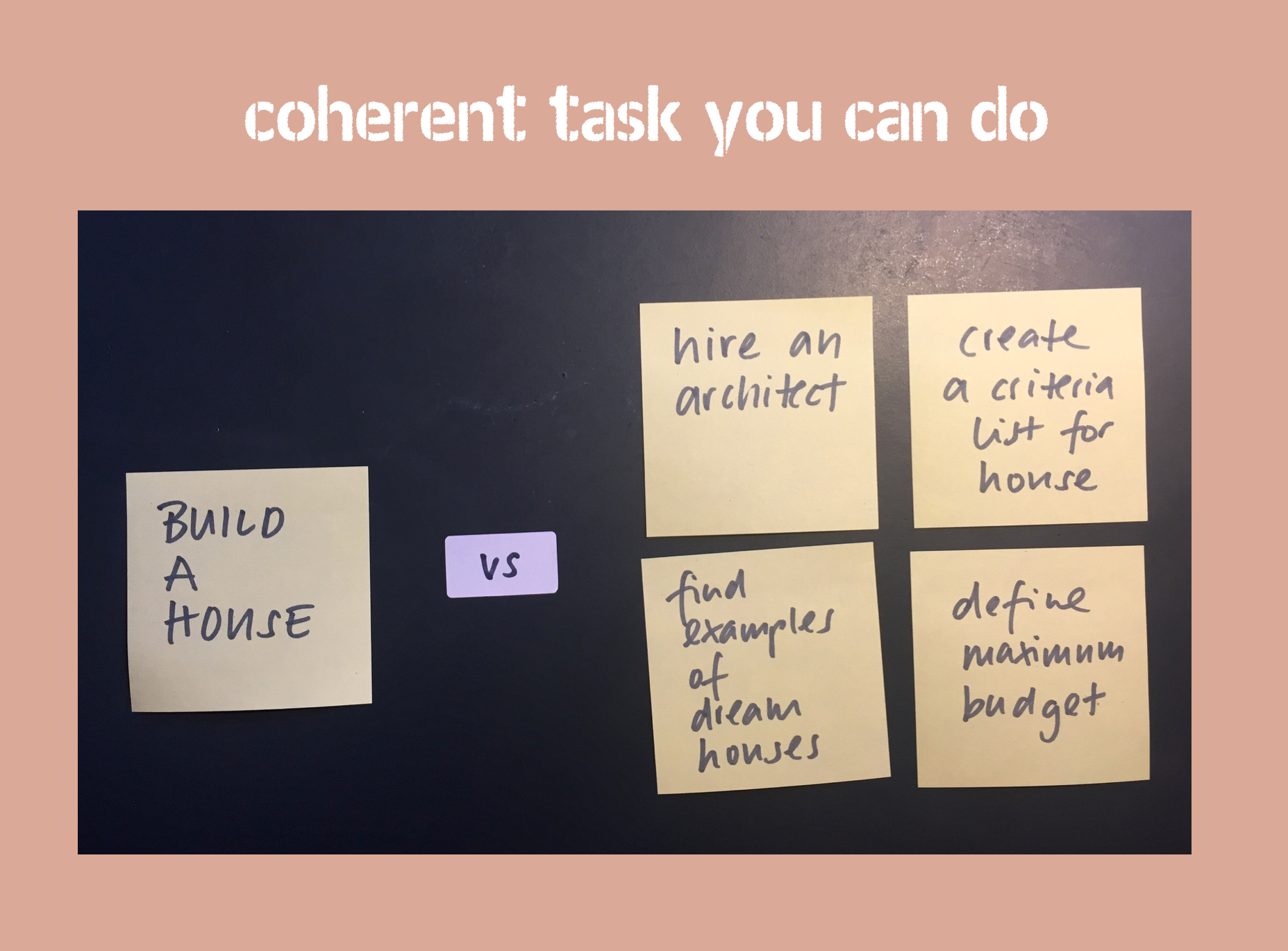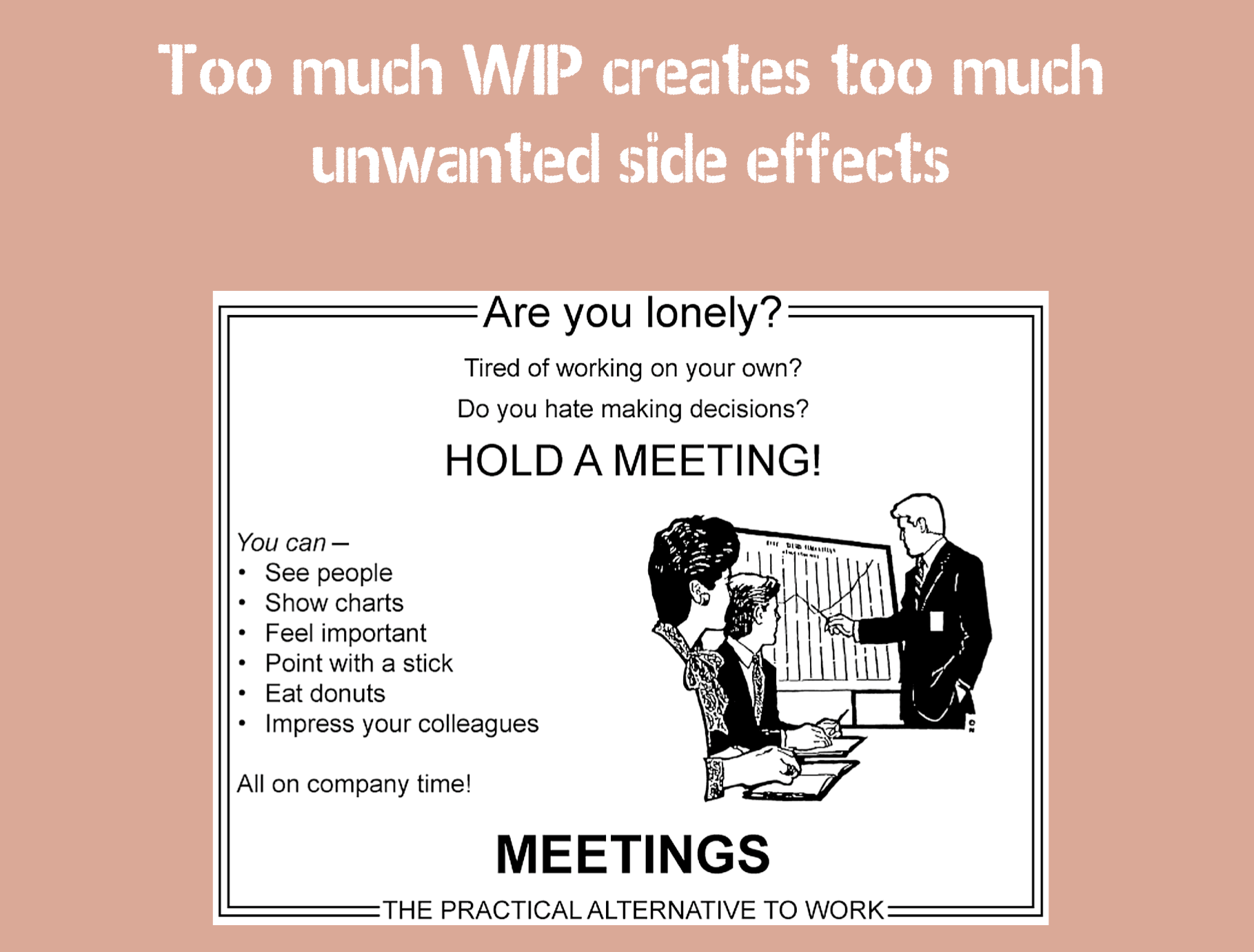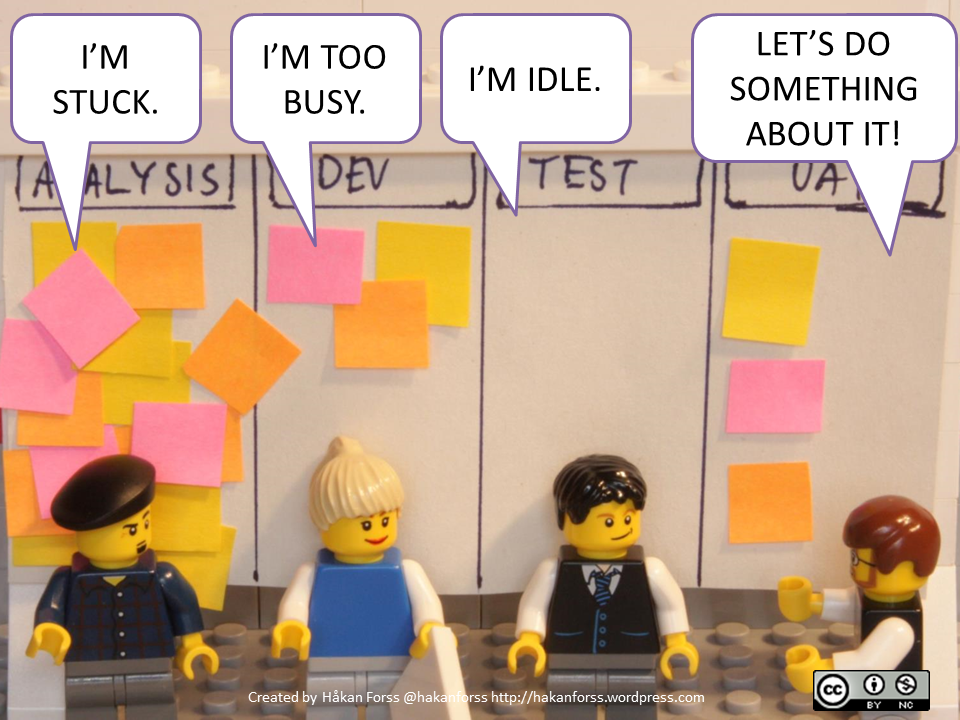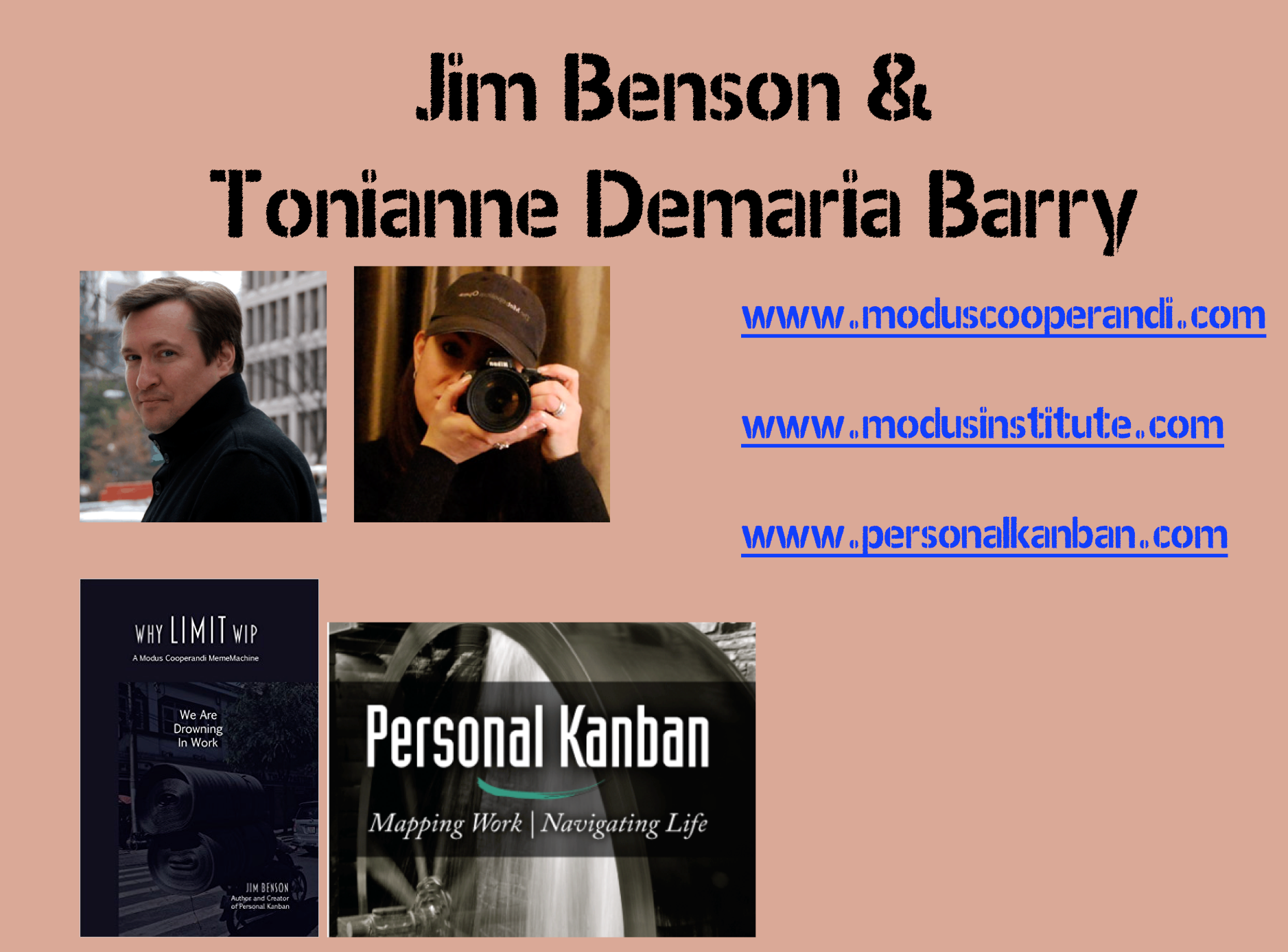Episode 2 – Limit your work in progress
Go to the audio edition
Limit your work in progress? – people who are not familiar with ideas from LEAN or KANBAN mostly ask the following question:
What do you mean? Isn’t every work that we do in progress? If it’s not in progress, it would be finished!
This observation is absolutely right! This is what this episode is all about: How can we limit the things that we have started, so that we can actually finish them before we start new things.
***
There are only a handful of people that have a wealth of knowledge about the idea on how people and teams can best limit their work in progress, and they are all people who have co-created kanban as a method to visualize work and to increase flow of work within a system.
One of them is Jim Benson. He is based in Seatlle but actually spends most of his time travelling the world to help organisations setup better collaboration processes. At the end of the episode, I will recommend two books by Jim that will change the way you do your work.
I wanted to know what motivates Jim to do what he does.
«When I wake up in the morning and I’m at home, I’m alive and then when I go to work I continue to be alive. So I chafe at the notion of work, life, balance because I love my work and I would like to see other people love what they do for work too. I would like people to enjoy what they do as much at work as they do in other parts of their lives and then hopefully make that a virtuous cycle where home gets better because work gets better.»
That makes sense. How would Jim explain to a person next to him on the plane why limiting Work in progress is a necessity for a relaxed and productive life?
«Everybody is overloaded and when you are overloaded you become stressed, you become frustrated, you sleep less, your eating habits decline and your quality of work and your satisfaction with life decline. If we start 15, 25 tasks which most people have in flight at any given point in time that means that the amount of capacity our brains have to focus on what we are working on right now is radically diminished. So we need to do a small number of things, do them quickly, do them right and move on to the next set of things, get completion, get satisfaction, move on.»
That sounds like if, in the end, every individual is responsible on their own to define what “limiting work in progress” means for them. What about people who work in companies where work is pushed their way with little options for them to say no? Jim agrees that organisations need to limit their work in progress, too, for instance reducing the amount of projects going on at the same time. But in the end, he says, it’s each individual who is responsible for the amount of work he or she takes on. That is why Jim talks about “personal kanban” as a system to keep track of your own workload.
«When an individual approaches their work it’s taking in to account the things that they are doing on their teams or for their teams or with their teams regardless of what kind of industry or organisation you are in, you are a person and you have things to do. If you do too many things then you won’t be able to focus on any given one of those things extremely well. So when you are approaching work as an individual one of the first things you have to ask is not what does the team need me to do by this deadline but what are all the things that are happening to me right now.
So what’s the planned work for this project? What things routinely interrupt me or come in and give me new opportunities? Am I available in other projects? If I devote my time to this project or I do commit to doing certain things by certain dates what other things won’t I be able to get done?»
But how does a person find the right limit for their own work? Imagine a simple kanban board with thre columns: To do, doing, done. How many things can be ongoing in your doing column? Have a number? Here is Jim’s suggestion:
«We usually recommend to limit at three things. Cognitively, we can handle five things, and we are fairly sure that people do not notice that they are doing two things. So the three things tend to create good flow, it means that tickets get completed on a regular basis and it allows people to observe their work so that they can figure out what is the planned work that we have, what is the unplanned work that we have. What things are actually am I actually doing that I like, that I enjoy, that I get done well. What things drag me down, you know they can start interrogating their work and then from that make better choice about tasks that they’ll volunteer to do. How to react to tasks that they forced to do and what kind of deadlines they can actually realistically set.
When we limit our work in progress to something that is realistic we find that we enjoy our work more and we complete it faster and it’s of higher quality when it’s done. Being able to focus on your work allows you to actually finish your work and the catch phrase that we use is so this is basically ‘you can’t do more than you can handle.»
Still, it seems hard to convince people to stick to their limits, even if they set them. Why?
«The funny thing is limiting WIP is totally intuitive. I have never heard anybody say I am not going to limit my WIP. You know we talked in our talks about how people … where overwork is a badge of honor and they say I’m you know … but in general when we tell people you can’t do more work than you can handle they generally don’t argue with that.
What is difficult is figuring out exactly how to limit your work in process and then how to not be surprised when you’ve exceeded because we all do it all the time.
We’ll be working and the phone will ring and we’ll get an email and somebody will walk up behind us and the next thing we know we are working on five things. That’s just the way the world works so what we want personal Kanban and any type of Kanban to do what we want to do and we are limiting WIP is provide a system so that we are aware that we have limited our work in process and then we can tone it back down. So just like we are driving in the car, the speedometer shows that we have exceeded the speed limit you know we don’t get angry with ourselves and say I am a lousy driver because I’ve exceeded the speed limit we just lower, then we have to take our foot off the gas pedal, car slows down to the speed limit and we go on.»
So let’s imagine a person who has built a habit of limiting their work in progress and to stick to the habit. What are the things that we can expect to happen?
«When a person limits their work in progress a few things happen right away. The first thing is you’ll find that you have greater focus on the task that you’re working on. When you have greater focus on the task that you’re working on you both complete it more quickly and you can move on more quickly to the next task that’s the easy part. But the interesting is that then you are finishing things that you’ve paid attention and so what you’ll remember now is not the stress of doing the work but the actual joy of the creativity of getting it done and the completion of it.
That sounds loose and happy and stuff but our brains actually work on processing information and our emotions are information. So when we are happy that is information that our brains use and our brains tell us in the future okay when something else comes up like that I don’t have to be scared it, I don’t have to freak out about it. I can get it done which makes you approach that similar tasks in the future more comfortably and with an assumption that you’re going to complete them well which is extremely important when you are a professional that works you know just using your brain.»
Jim wrote a book called «Why limit WIP?», and in this book, he gives many more reasons and effects that will convince you that limiting your WIP will change your life!
now, limiting WIP is best done in a visual system. Because if you have a visual cue that makes you realize that you have exceeded your limit, you will be able to change something. And if you see that your work does not flow very well through your visual system, you might want to change your WIP limit.
Or as Jim puts it: «If you are not visualizing the work you can’t limit your work in process because you won’t know what you’re doing.»
To give you an idea how important visualising is, here is a story that Jim told me about a clinic he consulted that was wondering why they were having so much loss in materials like syringes, gauze, pills and other things. They were worried that people, maybe even doctors, where stealing those materials. They wanted to get an analysis of their workflow and where the losses occured. But Jim had another suggestion:
«Let’s get a bunch of the toy cameras that make little stickers when you take pictures of things. Every time someone comes in to the clinic you take a picture of them and you put them on a Kanban. Then when your doctors do rounds I don’t want them to talk about the charts I want them to talk about the pictures. So that when they go home at night and when the nurses go home at night and when everybody else is home at night they are not thinking of the work, they are thinking of the value that they created and how much they were able to get to flow through their system. So the visual system that they were creating was going to help them understand the value that their jobs were bringing to their patients. When they went home they would be thinking of helping people and not how much their feet hurt and put the system in they were not happy about it put the system in and loss went way down by about 60%.»
It was not that anyone was stealing anything. They were loosing materials because they had no clear sense of purpose of their work and because they were completely overloaded. Using a visual system changed that in an instant.
What does this mean for a kanban system in which you limit your WIP?
«So when we set our work up in a visual system one of the first things that it does, is it visualizes the existing workload that we currently are holding either in our heads or in a difficult to-read list. When we visualize that backlog it just becomes stuff to do, it becomes options and we say I can do some of that or I can let some of that slide. We start to understand how it relates to each other. The second thing that visualizing it in a Kanban does is it shows the work flows through the system so it’s just stuff that we cross off in a list you know violently killing it when we are done, it’s stuff that flows through and it becomes more valuable when we complete it.
So the value wasn’t taking that thing and being able to cross it out it was being able to move this task in to a done column. Then when it gets there it now represents the realization of an idea versus a task I had to do. When you get to a point when you have to go back and think about the work that you did you can look in to the done column and you can say these are the things that really happen.»
To summarize: Set up a visual system like a kanban board and making sure that you set limitations on your work in progress, for instance your “doing now” column. But for work to flow through your system and for the limits to work their magic, there is another think you need to monitor: The tasks that flow through the system themselves, most of the time represented with sticky notes with text on them.
»There are two sizes of tasks, things you can do and things you can’t. We go crazy as human beings trying to plan out exactly what we are going to do and exactly how long it’s going to take and we are always frustrated when it doesn’t. The fact is, is that there is a cognitive bias called the planning fallacy which basically says we can’t plan.
So what I would like to see on those tickets in your Kanban as they are flowing through those tasks that you are going to do is is the description of the work that you are about to do clear? Is it really only one task? So just make sure that your tasks are broken down so that they are actual tasks that you can complete them. that could take a week, it could take five minutes I don’t care as long as it’s a coherent description of real work.»
Since Jim has first described the idea of limiting WIP about 12 years ago, he has learned a lot of course. Recently, he has made an interesting discovery.
«What I’ve discovered is that there is a lot of different kinds of work in process, there is the work in process that you are actually doing. There is hidden WIP which is work that you are actually not aware that you are doing. There is ambient WIP which is work that you are doing that you are aware of but you are not telling other people about.
There is guerrilla WIP which is WIP that you take on and cannot let anybody know that you are doing. There’s induced WIP which is basically as we gather up all of those other works in process, all of a sudden we find that we are falling behind on all of the things that we are doing. Then we have to have meeting talking about how far behind we are and then we have to like … meet performance improvement plans, we have to do this. Now the other thing we have to have coordination meetings because we are doing so much. So the stuff that we are doing actually drives more work and the inefficiencies just start to multiply at that point.
So if you have a group and that group has 15 or 20 people who are all working on a bunch of different projects you know you are going to spend a lot of time in meetings trying to negotiate the relationships between those projects rather than actually just finishing them. You have to do that it’s actually not wasted time it’s 100% important time in an overloaded environment. The only way to avoid that is to limit the WIP of the organization.»
As Jim said at the beginning: Limiting WIP is all about making work interesting, fun and rewarding again. Without, the situation looks quite bleak:
«We are so good as human beings at utterly destroying our ability to enjoy our work an enjoy our life. The thing that really scares me and everybody seems to relate to this is that everybody is in a position … We’ve been in a position at one point in their lives where they’ve had to either make a report, they’ve had to do a time sheet and they can’t remember what they did. That’s terrifying for me that we as human beings discount the value of living so much that we will go to work for eight hours a day and not remember it.»
Lastly: What does Jim have to say to those who say that some overload is actually good for people? That some stress can be beneficial?
«Overload can be beneficial for very short periods of time so if there is an emergency in your office, the building is on fire people better get off and run. They’ll do some quickly and they better do something probably that blows their WIP. But emergencies can bring people together but when you have one look for ways to learn from that experience so that you can collaborate better, you can share work better and when you are finished with your work you as a team and as an individual feel like you’ve actually accomplished something.»
Jim Bensons website is: www.moduscooperandi.com and www.personalkanban.com
Together with his business partner Tonianne Demaria Barry he is the author of “Personal Kanban” and “Why limit WIP” (to just name two). Lately, he set up an online learning environment called modus institute where people can learn about things like limiting WIP. right now, you can enroll in a class about working in distributed teams. Go and check it out! www.modusinstitute.com

